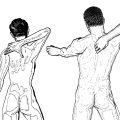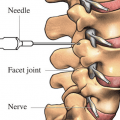As you may already know, the human nervous system is divided into two parts – the central nervous system and the peripheral nervous system. The peripheral nervous system is made up of a network of motor and sensory neurons. One network carries signals from the brain to the rest of the body and the other network carries signals from the extremities back to the brain. The peripheral nervous system can be further divided into the autonomic and the somatic nervous systems.
The nerves that make up the peripheral nervous system (called peripheral nerves) are similar to electrical wires – they have an inner core (called the axon) which is protected by the myelin sheath (acts as insulation). When the myelin sheath on any peripheral nerve becomes damaged, peripheral nerve impulses may slow down – if the axon is damaged, the speed of the connection may remain the same but the strength of the signal is weakened. These two things are the core dividers between type 1 and type 2 for Charcot Marie Tooth disease.
The causes of CMT are genetic and most forms involve damage to the axon or demyelination. Genetic defects in the genes for certain proteins that affect the axons or the myelin sheath are the driving force behind CMT. Because CMT is the result of genetic mutation, there are as many kinds of CMT as there are related genes – there are about 80 different genes that have been linked to CMT so far and more are likely to be discovered.
In some cases, Charcot Marie Tooth disease presents in a similar way to various types of acquired neuropathy – this is a kind of nerve damage caused by chemical exposure, diabetes, drug use, or immunological abnormalities. In reality, however, CMT is a hereditary condition and it is not contagious. Because it is passed down from one generation to another, CMT is also sometimes called hereditary motor and sensory neuropathy, or HMSN. There are three ways that CMT can be inherited:
- X-Linked – This type of inheritance occurs when the mutated gene is located on the X chromosome. X-linked diseases tend to affect men more often than women because women have two X chromosome – if one copy is normal it might be able to compensate adequately for the defective copy. An X-linked disease cannot be passed on from father to son.
- Autosomal Dominant – Autosomal inheritance occurs on some other type of chromosome, not the X or Y – for this reason, autosomal diseases affect men and women equally. An autosomal dominant inheritance occurs when a single copy of the mutated gene is enough to cause the disease – if a person inherits a mutated gene from their parent, both of them will have the disease.
- Autosomal Recessive – In this type of inheritance, two copies of the mutate gene are necessary to cause the disease. The person would receive one copy of the mutated gene from each parent and, in most cases, neither of the parents have actually developed the disease.
When CMT is inherited through autosomal dominant inheritance, it is easy to trace the disease on the patient’s family tree. Both X-linked and autosomal recessive inheritance, however, are harder to track. This is because one or both parents may not actually have the disease but they are carriers of it. In addition to these three types of inheritance, there is one more way that CMT can occur. In rare cases, a spontaneous mutation may occur during conception which can cause CMT. In cases like this, the child can then grow up to genetically pass the disease on to his or her children.
The risk for passing on CMT from one generation to the next depends largely on the type of CMT. The age at which a person who is genetically predisposed to the disease varies as well. People with type 1 generally start to develop symptoms in late childhood or early adolescence while people with type 2 typically present with symptoms later in life – around early adulthood or middle age. The rate of progression for the disease varies from one type to another, though most cases progress very slowly.






 I love to write medical education books. My books are written for everyone in an easy to read and understandable style.
I love to write medical education books. My books are written for everyone in an easy to read and understandable style.